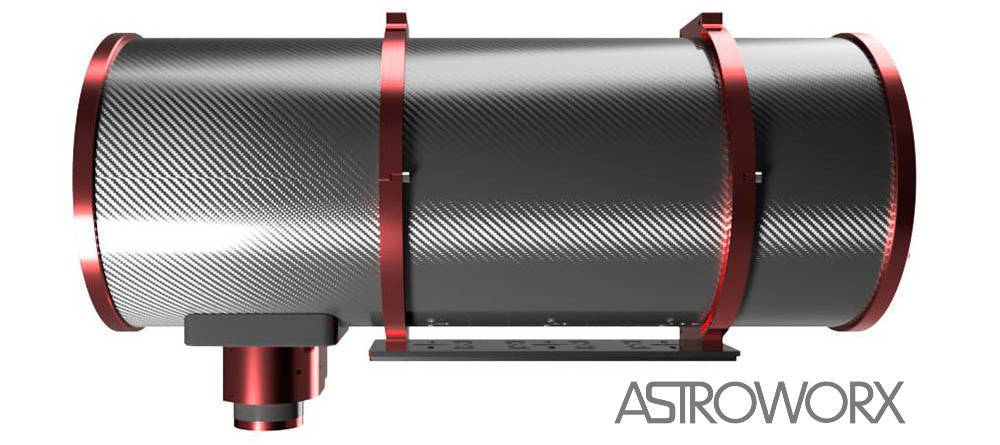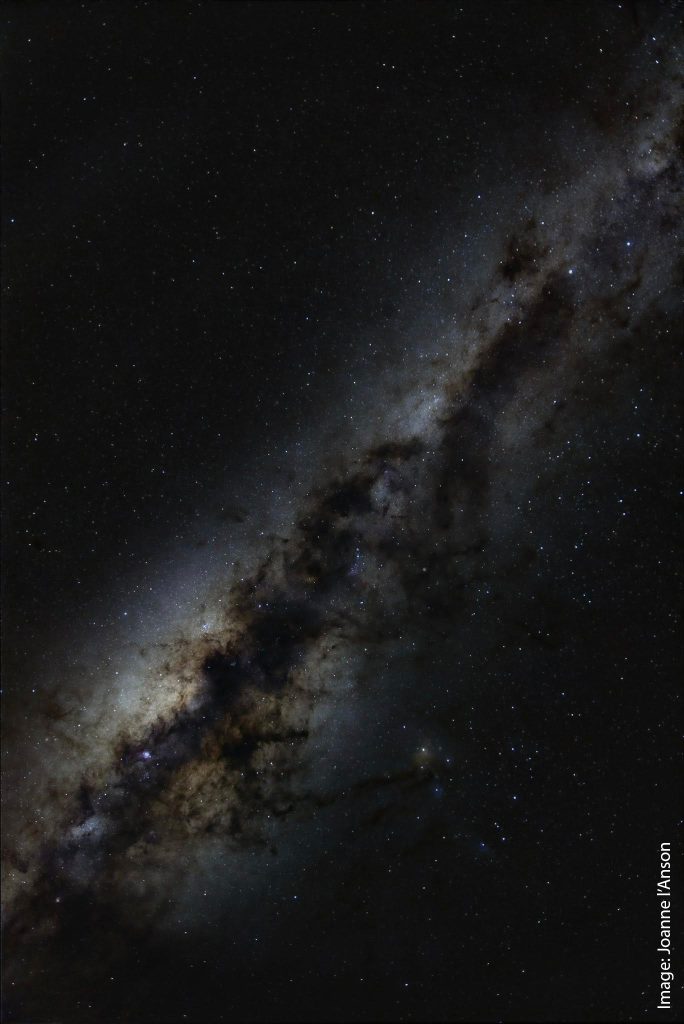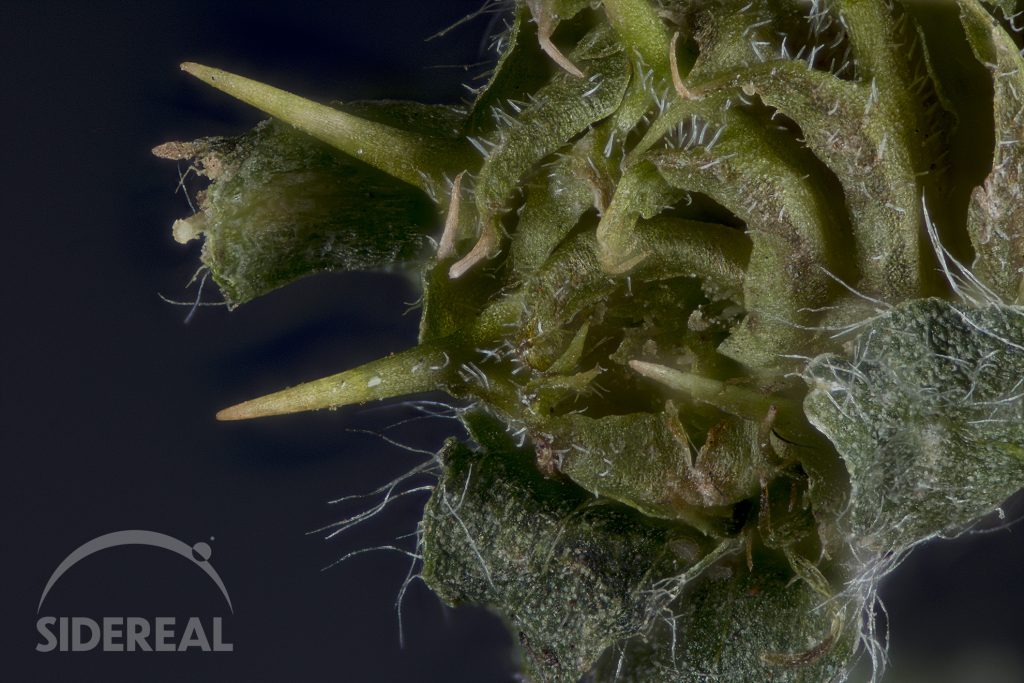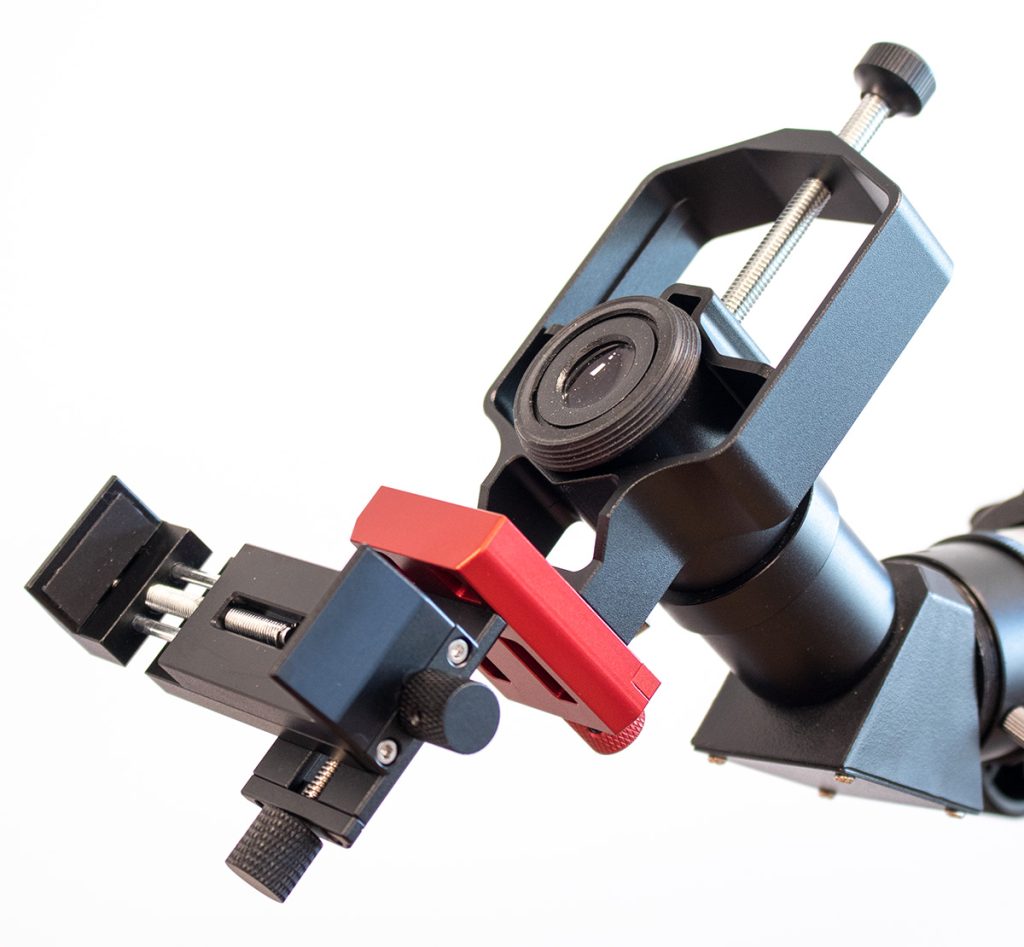Most of you already know that Sidereal Trading is the home of Astroworx, the only telescope factory in Australia. Over the past few years, we’ve been making Newtonian astrographs, developing and refining the design and improving performance.
The telescopes Diego has been producing have, until now, been prototypes, rather than a production model. Diego, being the perfectionist he is, has refined the design and features of the scopes during the early manufacturing phases.
We’ve now settled on the first “production” model, a 10 inch f/4 closed tube Newtonian.
Made in Australia
This astrograph is made from Australian aluminium and carbon fibre, and fashioned on our CNC machines in the factory in Tullamarine. While the overall geometry hasn’t changed since Newton’s day, Diego’s design refinements hold the optics rigid at any angle while not pinching either mirror. This way, the astrograph provides the highest-possible quality images. It competes with offerings from the top-end brands around the world.
This telescope stands out from the crowd in a lot of different ways.
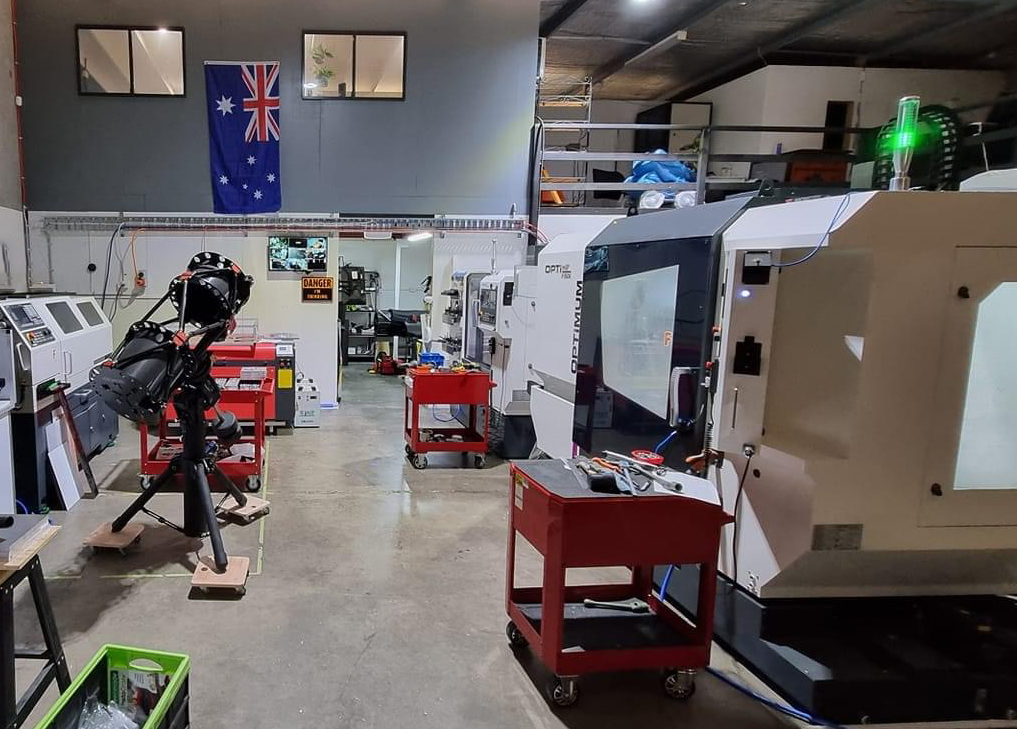
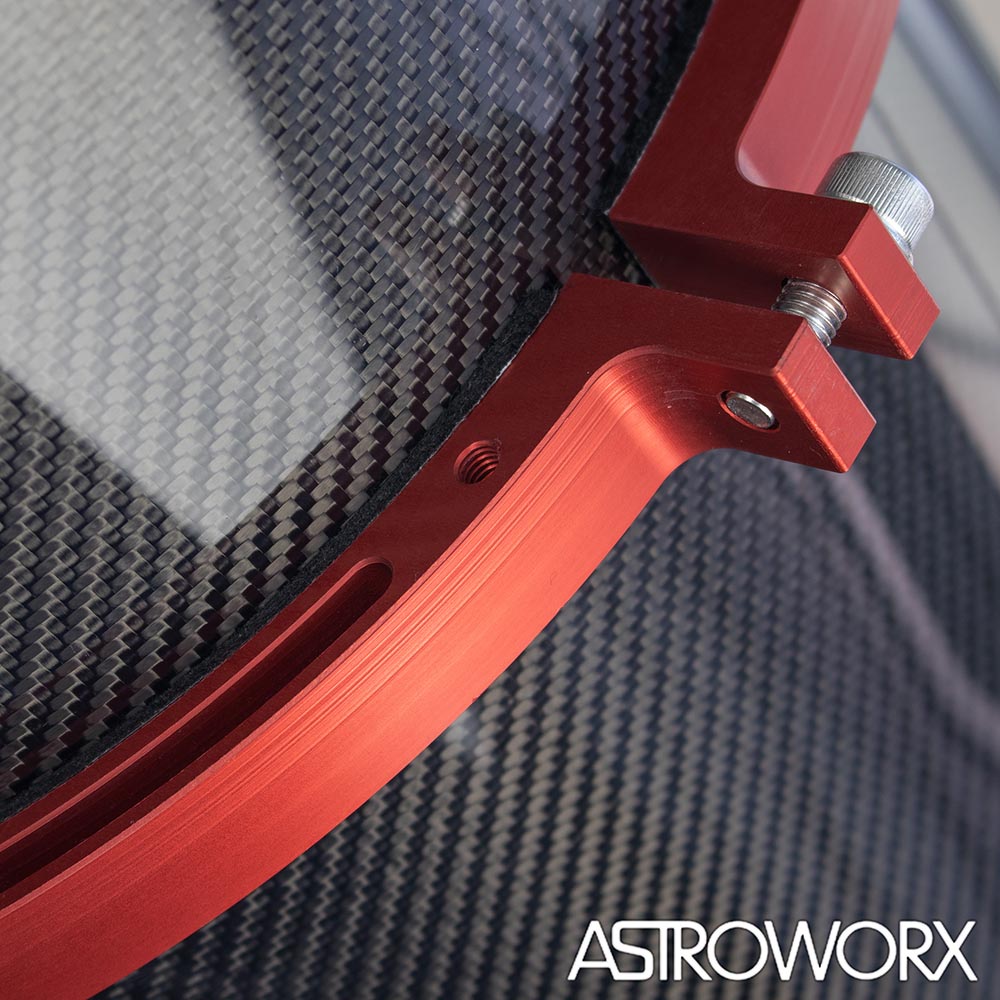
Carbon fibre and anodised aluminium
The first thing you’ll notice is the beautiful carbon fibre tube with red anodised aluminium tube rings. This is made in Australia, of course, and the combination means the tube is light without being flexible. It’s also very thermodynamically stable, which means it won’t change shape or size as the night cools down. You won’t have to waste exposure time recollimating.
Mirrors
The telescope is made in Australia – apart from the mirrors. When people hear that, the most common question they ask is “so who made the mirrors?”
The secondary mirrors are made by Antares in the US. The secondary mirror on the standard Astroworx astrograph is 1/14 wave flatness, which is a significant upgrade on less expensive astrographs. In fact, upgrading the secondary mirror is the most effective way to improve the imaging on a Newtonian telescope.
The primary mirrors in the basic Astroworx astrograph are provided by GSO (for the f/4 models) and Sky-Watcher (for the f/5 models). However, other mirrors are available and we can fit (and have fitted) client supplied mirrors if required. For example, here is a conical mirror in an Astroworx truss.
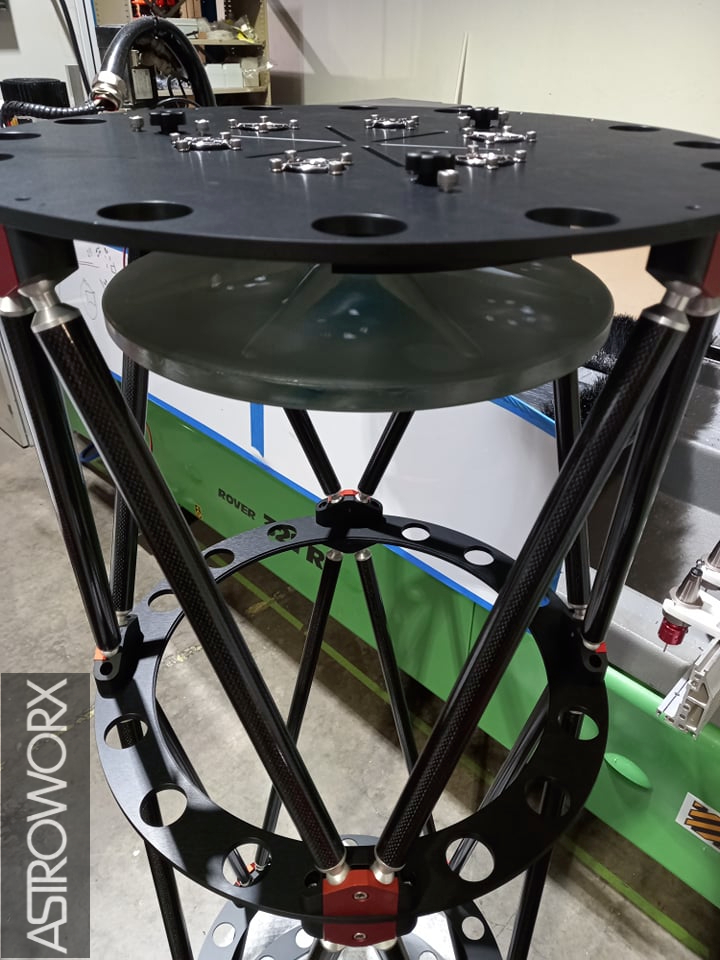
Rigid secondary mirror
The next most obvious point of difference is the secondary assembly. You’ll see that there’s a solid spider. This ensures the beautiful diffraction spikes you’re seeing here. It also supports the secondary mirror without moving. Thin vaned spiders tend to slump under gravity, meaning you need to recollimate after your meridian flip, and your diffraction spikes drift and change angles during the night, spoiling your final image.
If you have a Newtonian scope handy, grab the spider vane and give it a wrench. You’ll notice it moves pretty easily, twisting left and right as well as moving up and down. During the night, as the mount follows the stars, this is exactly what gravity is doing to your scope. It results in your images being a little out of collimation. A solid spider just doesn’t move.
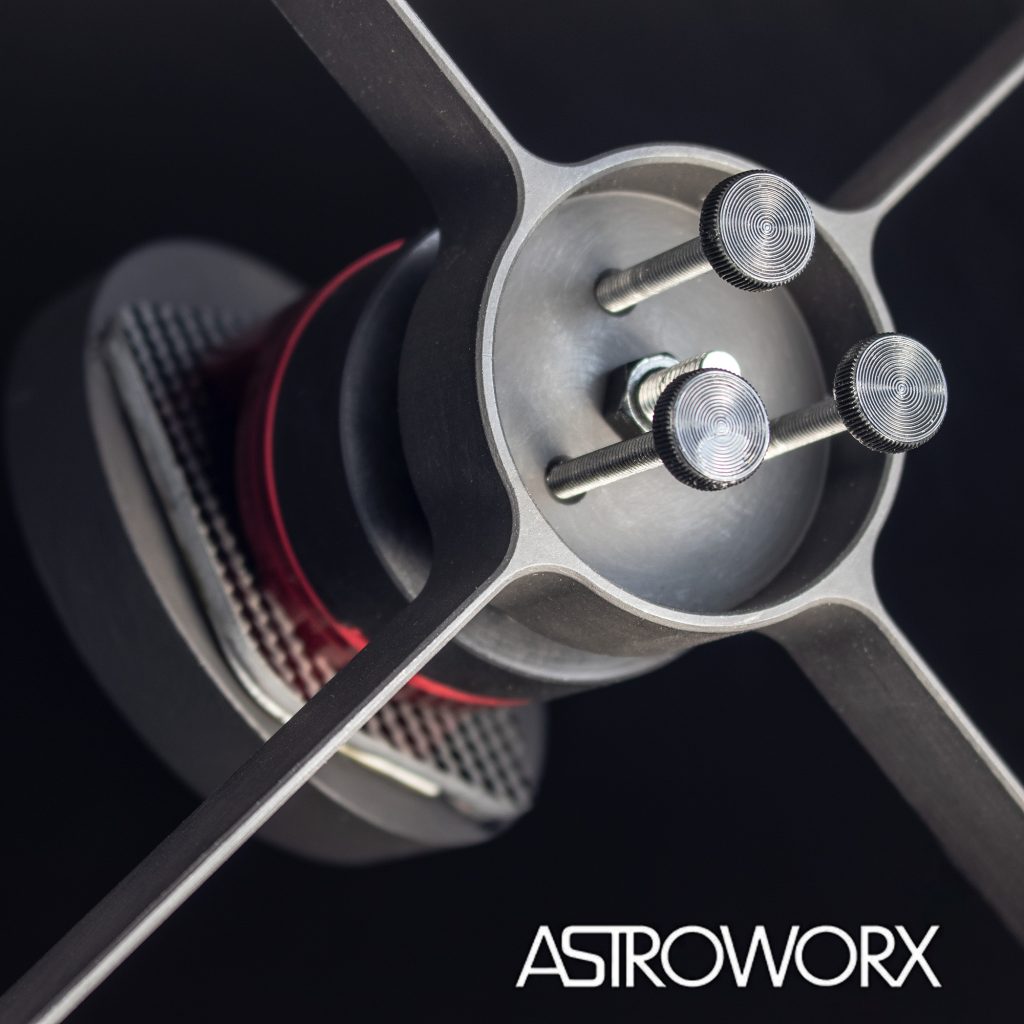
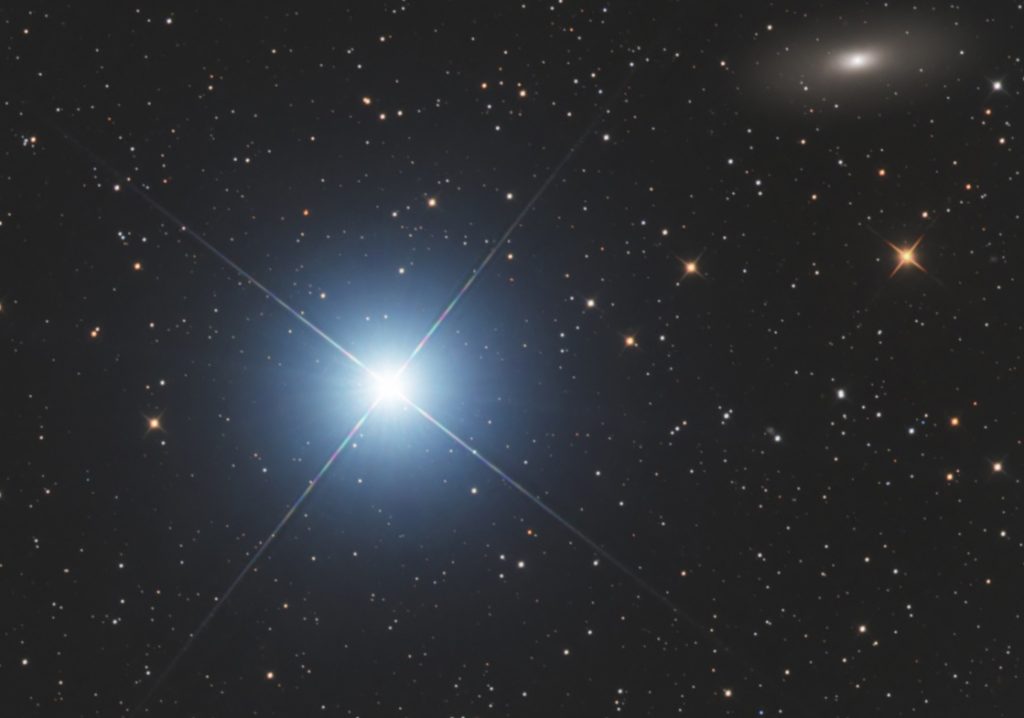
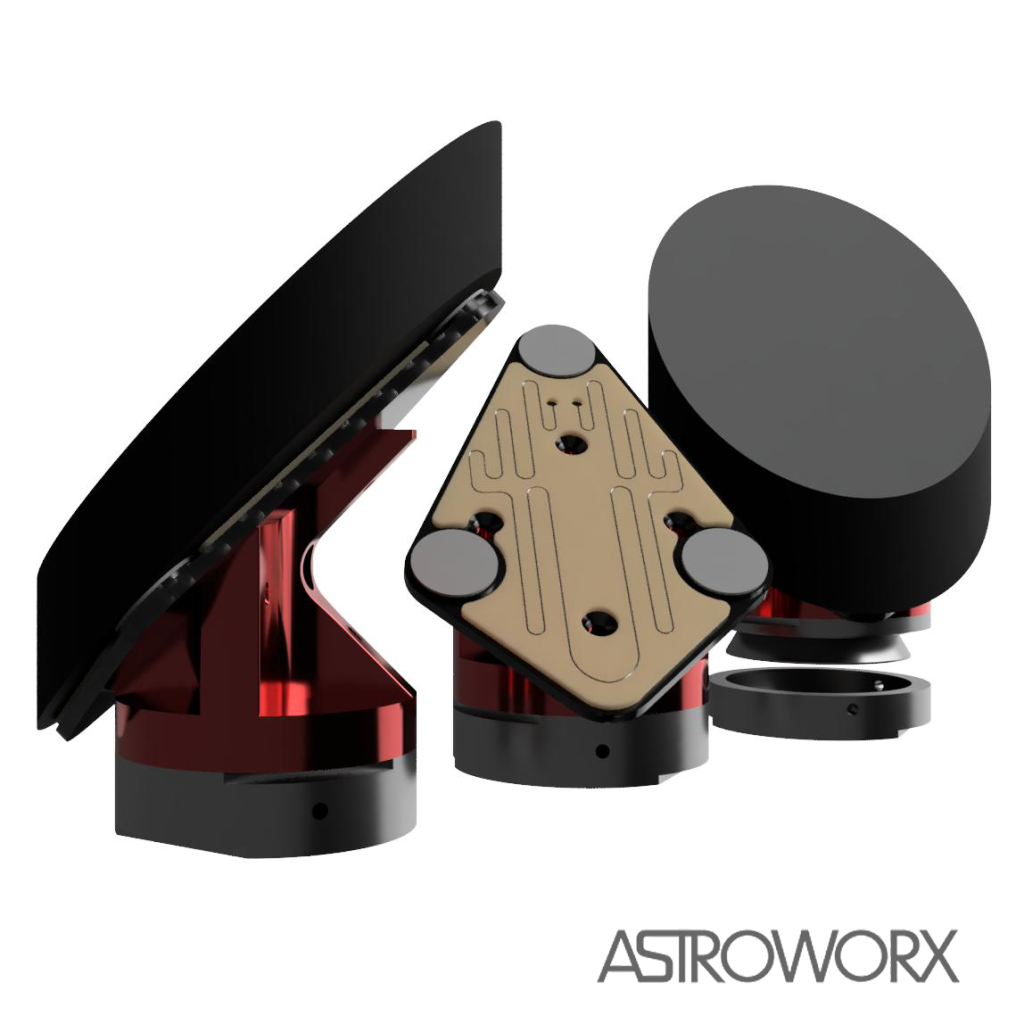
We designed the secondary mirror holder so you can collimate the secondary and rotate the holder independently. This means that you will collimate the scope faster and easier, and not have to recollimate and rotate the mirror several times. Iterating your way to the correct alignment is a waste of precious exposure time.
Support for the primary without deformation
Again, if you have a Newt, have a look at its primary mirror cell and see how many ways the mirror can move or find itself under physical stress. The Astroworx-designed primary cell supports the mirror from behind in six places. Three rocker supports hold the mirror securely without using side clips, which means it won’t move after you’ve collimated it. There’s also no possibility of stressing the mirror and pinching the optics. Your stars will stay round at all times.
Not having clips on the primary mirror also reduces flares around bright stars. The Astroworx astrograph prevents flares in other ways too, including using a primary mirror mask, and ensuring the focuser drawtube doesn’t intrude into the main telescope tube.
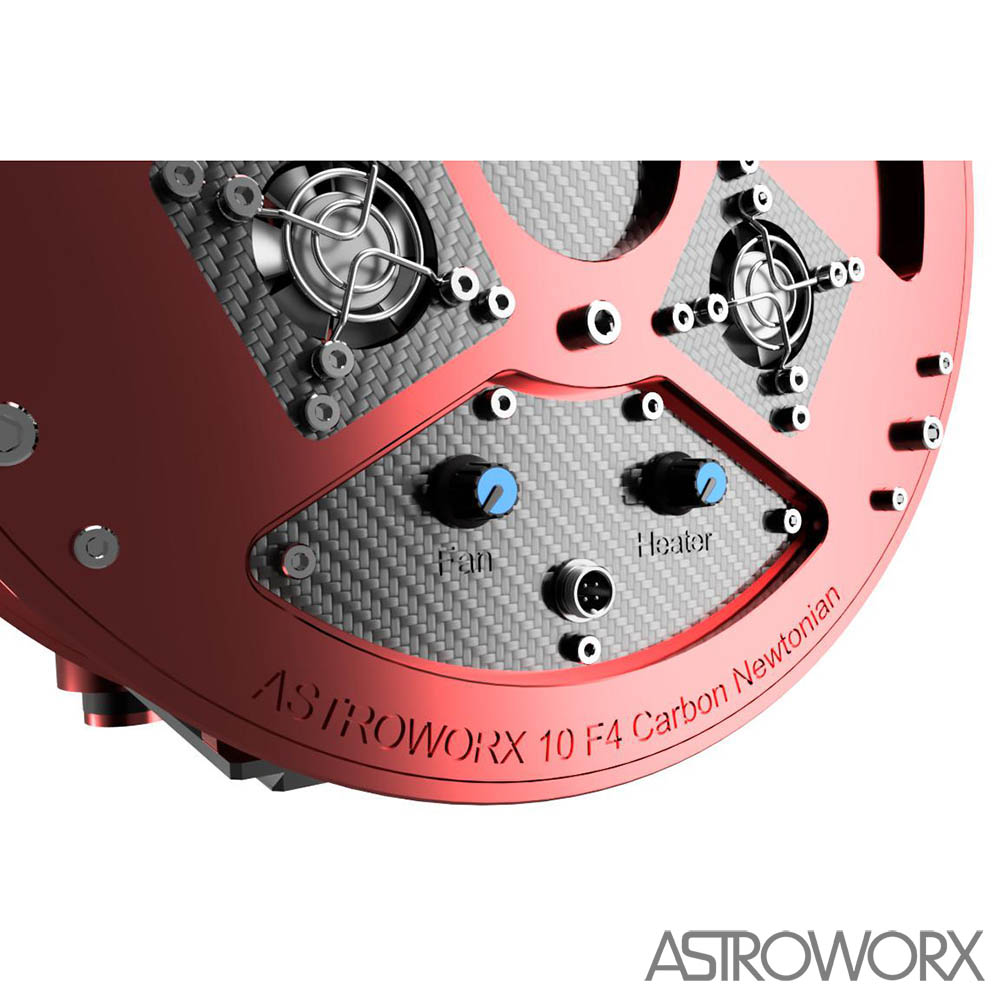
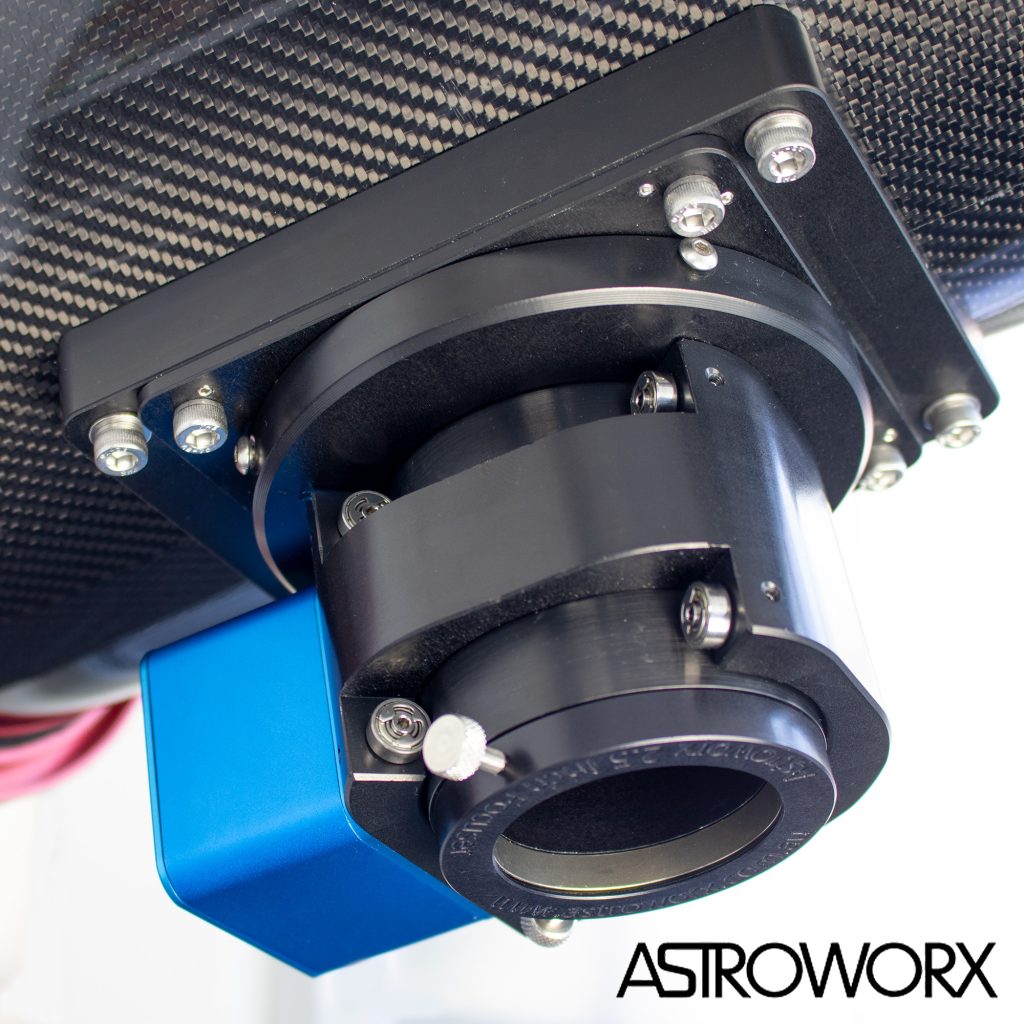
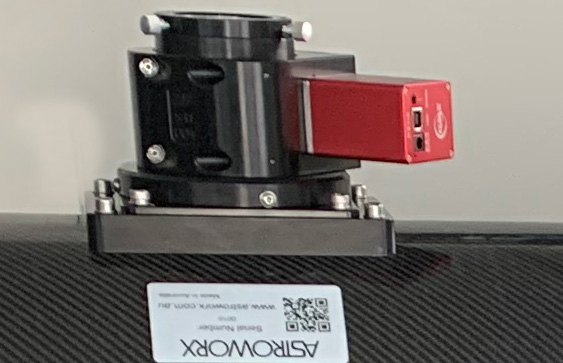
Astroworx focuser
The astrograph comes with Astroworx’s own Crayford-style 2.5″ focuser. Underneath the 2″ compression ring, the drawtube has an M68 thread. This gives you a number of choices for coma correctors. The body of the focuser, like all other parts of the astrograph, is CNC machined anodised aluminium, but the drawtube is hard-anodised for wear resistance. For the same reason, we made the roller from titanium, meaning it will not wear or bend over time. Eight bearings (four on the drawtube and four on the roller) ensure collimation of the focuser.
The focuser is powered either by a Pegasus FocusCube or a ZWO EAF.
A few example images
The Astroworx 10 f/4 has started to produce some great images. The ones we have here are courtesy of one of our clients. If you’re looking for more images or more resolution, search Astrobin for Astroworx.
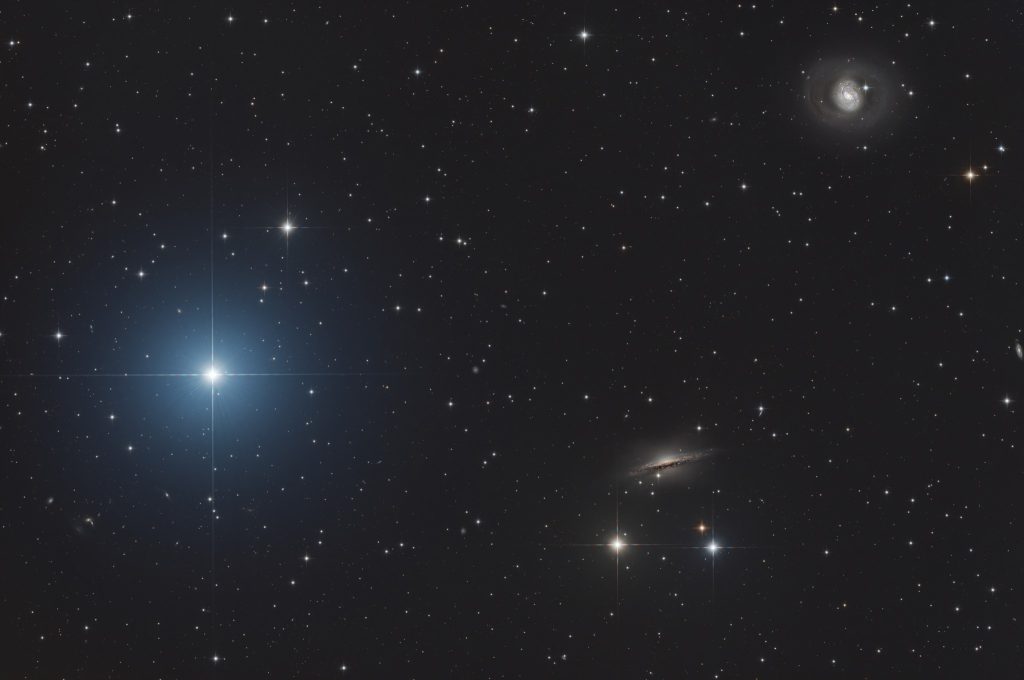
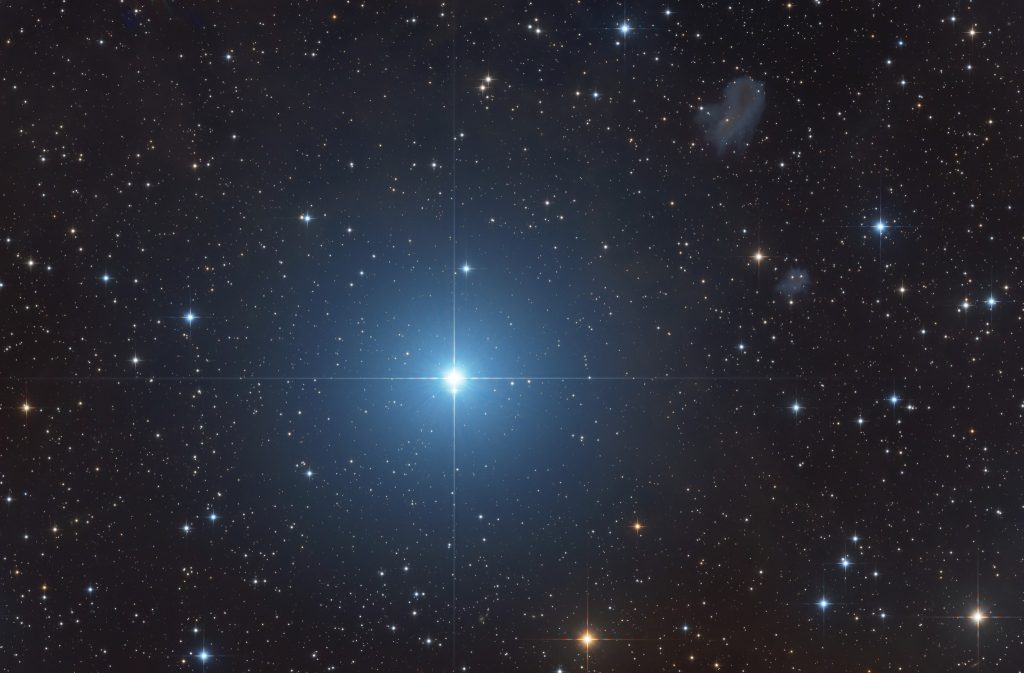
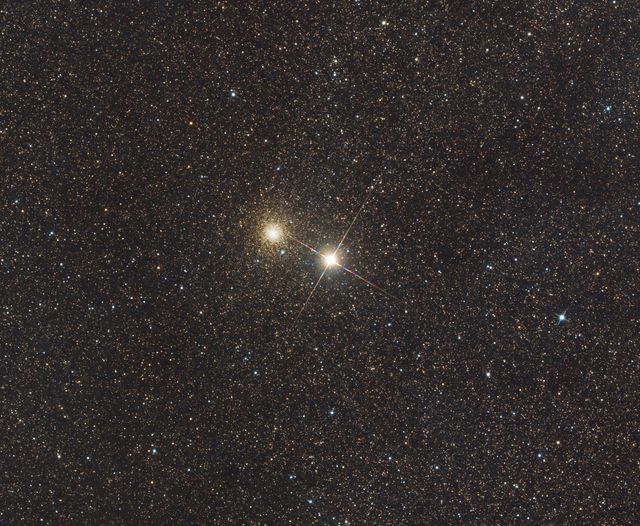
The scope is now on the website at https://www.siderealtrading.com.au/product/astroworx-10-f-4-carbon-fibre-closed-tube-newtonian/. There is already a waiting list for supply, so if you’re considering a serious upgrade, along with support and advice, let us know sooner rather than later!
